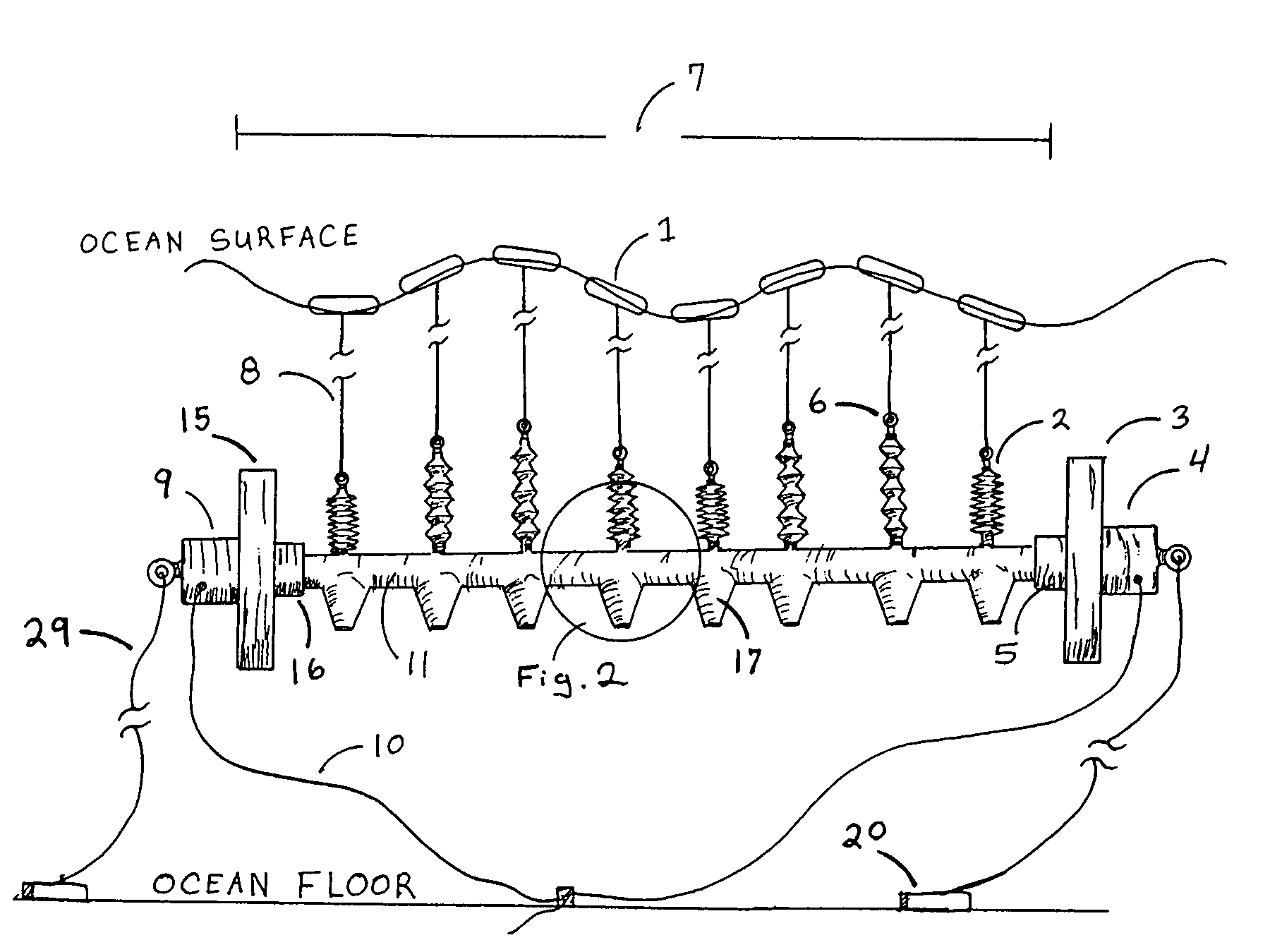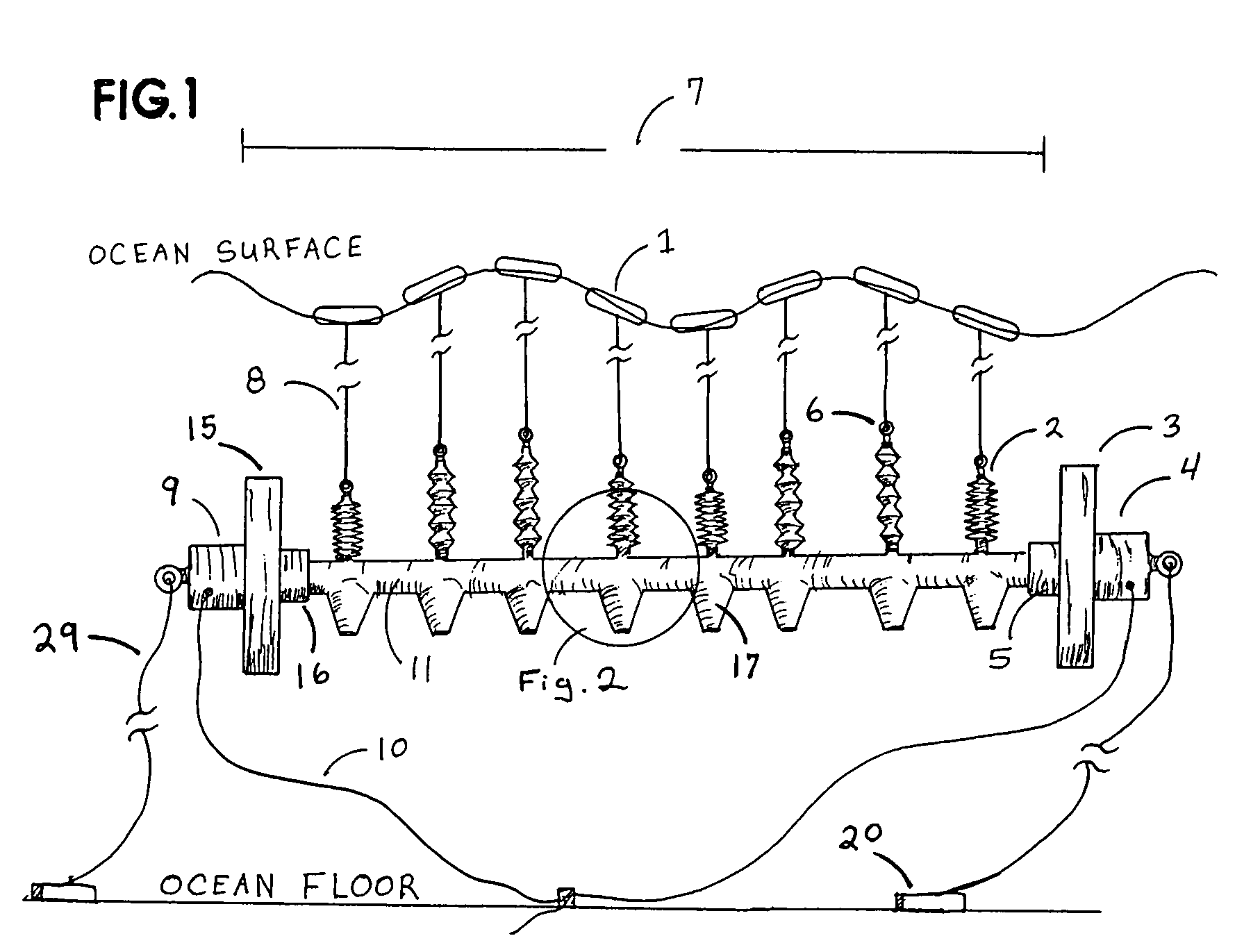Ocean wave energy converter
a converter and ocean wave technology, applied in the direction of electric generator control, machines/engines, mechanical equipment, etc., can solve the problems of increasing the cost, increasing the cost, and difficult to achieve, and achieve the effect of increasing the tension and increasing the length
- Summary
- Abstract
- Description
- Claims
- Application Information
AI Technical Summary
Benefits of technology
Problems solved by technology
Method used
Image
Examples
Embodiment Construction
[0019]The apparatus takes into account the difficult obstacles that have prevented other devices from being successfully used as power generators. These are some of the problems this apparatus solves: (A) The apparatus has no moving parts that are exposed to the salt water. (B) The beam uses its own mass to act against the pulling forces of the floats, so it does not having to be tightly fastened to the ocean floor. (C) The beam does not have to mechanically adapt to the change in height of the tide. (D) The beam will be submerged deep enough so that ships cannot damage it. (E) The machine components may make energy in both directions as the individual floats add and release tension on the retention springs. (F) The beam is protected from storms and large waves because it is well below the ocean surface. (G) The huge cost saving of not having to anchor tightly to the ocean floor will make this apparatus more cost effective. (H) One anchor can hold numerous floats. (I) Beachfront pro...
PUM
 Login to View More
Login to View More Abstract
Description
Claims
Application Information
 Login to View More
Login to View More - R&D
- Intellectual Property
- Life Sciences
- Materials
- Tech Scout
- Unparalleled Data Quality
- Higher Quality Content
- 60% Fewer Hallucinations
Browse by: Latest US Patents, China's latest patents, Technical Efficacy Thesaurus, Application Domain, Technology Topic, Popular Technical Reports.
© 2025 PatSnap. All rights reserved.Legal|Privacy policy|Modern Slavery Act Transparency Statement|Sitemap|About US| Contact US: help@patsnap.com



